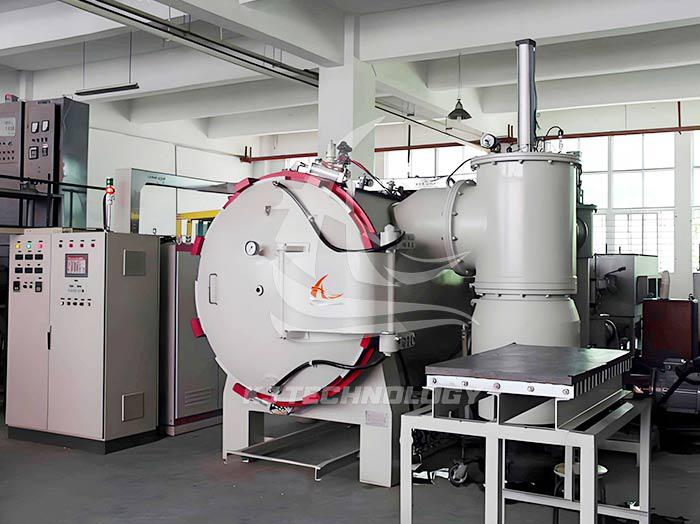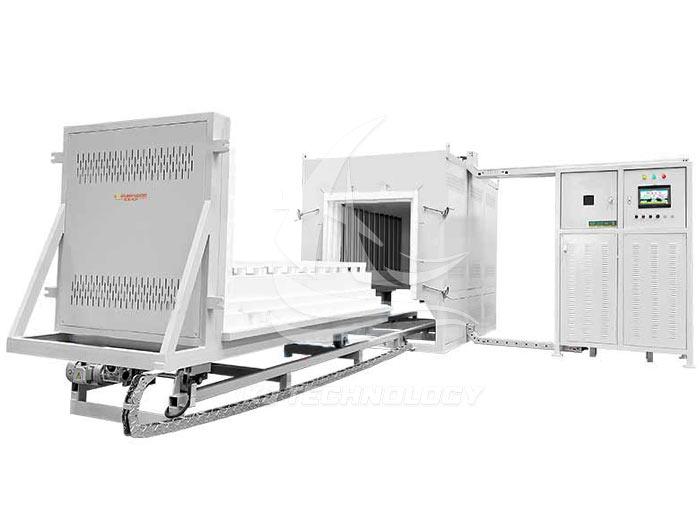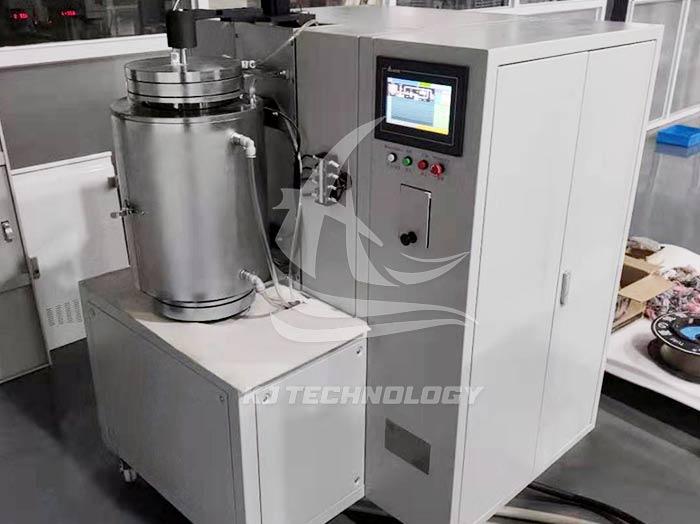Vacuum furnace annealing
 10-10-2025 Author: KJ technology
10-10-2025 Author: KJ technology
Vacuum furnace annealing is a heat treatment process carried out in a vacuum or protective atmosphere environment, aimed at achieving metal material annealing and maintaining surface brightness by isolating oxygen. The following provides a detailed introduction from five aspects: principle, equipment, process, application, and advantages and disadvantages:
Principle
Vacuum furnace annealing uses a combination of mechanical pumps and diffusion pumps to evacuate the air inside the furnace and create a vacuum environment. At the same time, heating elements are used to heat the temperature inside the furnace to the desired value. In a vacuum state, the reaction between metal materials and oxygen is effectively isolated, thereby avoiding surface quality degradation caused by high-temperature oxidation. In addition, a vacuum environment also helps to remove impurities such as hydrogen and nitrogen from materials, reduce hydrogen embrittlement tendency, and improve material performance.
Equipment
The vacuum annealing furnace is the core equipment for performing this process, belonging to the European and well type multi-purpose furnace category, mainly used in the fields of metal processing, semiconductor manufacturing, and glass technology. The equipment is divided into two types: horizontal and well type:
Horizontal vacuum annealing furnace: adopting a sealed furnace tank design, equipped with a mobile insulation furnace body to accelerate cooling. Suitable for vacuum annealing treatment of special materials, stainless steel, selenium steel sheet iron cores, precious metal parts, etc.
Well type vacuum annealing furnace: adopts pre vacuum gas protection process, built-in stirring fan to improve furnace temperature uniformity, and supports PID intelligent program temperature control. Suitable for non oxidizing bright annealing of mechanical parts, silicon steel sheets, copper materials, etc.
Workmanship
The vacuum furnace annealing process usually includes the following steps:
Preparation before opening the furnace: Put the materials into the furnace and close the furnace door, check if the circuit wire ends are loose, open the compressed air main valve and water supply main valve in front of the pneumatic triple piece, and ensure that all return pipes have water outlet.
Vacuuming: Vacuum treatment is carried out inside the furnace through mechanical pumps and diffusion pumps to achieve the required vacuum degree.
Heating: Heating the material in a vacuum state to reach the annealing temperature and maintain it for a certain period of time.
Cooling: After annealing, choose the appropriate cooling method (such as air cooling, oil cooling, etc.) according to the process requirements.
Shutdown: Close all valves and power supply, and maintain the vacuum state of the system.
Application
The vacuum furnace annealing process has been widely used in multiple fields:
Aerospace: Used for stress relief and performance improvement of key components such as engine blades.
Semiconductor manufacturing: used for annealing treatment of precision components such as wafer carriers.
Medical devices: maintain a biocompatible surface for titanium alloy orthopedic implants and other materials.
Precision Machinery: Used for non oxidizing bright annealing of stainless steel products, metal brazed parts, etc.
Advantages:
Preventing oxidation: The vacuum environment effectively isolates oxygen and prevents metal materials from oxidizing at high temperatures.
Improving quality: removing impurities from materials, reducing hydrogen embrittlement tendency, and enhancing material performance.
Wide applicability: Suitable for annealing treatment of various metal and non-metal materials.








